Step-by-Step Guide: How to Fill up a Tire with an Air Compressor

Having properly inflated tires is crucial for safe and efficient driving. One of the most convenient ways to fill up a tire is by using an air compressor. An air compressor is a device that pressurizes air and allows you to quickly and easily inflate your tires to the recommended PSI (pounds per square inch).
Before you begin, it is important to gather the necessary tools and equipment. You will need an air compressor, a pressure gauge, and the appropriate nozzle or attachment for your tire valve. Make sure that the air compressor is in good working condition and that it is equipped with a long enough hose to reach all of your tires.
To begin, locate the tire valve on the rim of your tire. The valve will usually be covered by a small cap that can be unscrewed by hand. Once the cap is removed, attach the nozzle of the air compressor securely to the valve. Ensure that it is properly aligned and does not leak any air.
Next, turn on the air compressor and set the desired PSI on the pressure gauge. It is important to check the recommended PSI for your specific tire, as this can vary depending on the vehicle and tire size. Slowly inflate the tire, periodically checking the pressure with the gauge to ensure you reach the correct PSI.
Once the tire is properly inflated, turn off the air compressor and remove the nozzle from the valve. Replace the valve cap and check the pressure once again with the gauge to ensure it is within the recommended range. Repeat these steps for each tire that needs to be filled up.
By following this step-by-step guide, you can easily fill up a tire with an air compressor and ensure that your tires are properly inflated for safe and efficient driving.
Gather Necessary Equipment
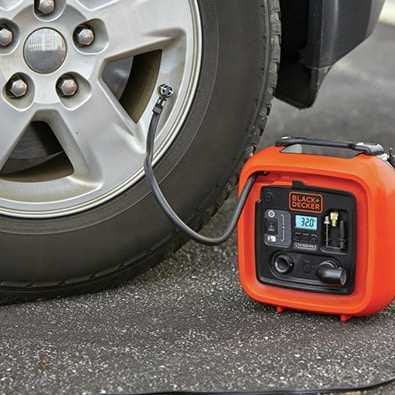
Before you can start filling up a tire with an air compressor, you need to gather the necessary equipment. Having the right tools on hand will ensure that the process goes smoothly and efficiently. Here are the items you will need:
- Tire pressure gauge: This tool is used to measure the current air pressure in your tire. It is essential for determining how much air you need to add.
- Air compressor: You will need an air compressor with a hose and nozzle to deliver the air to your tire. Make sure the compressor is in good working condition and properly inflated.
- Air compressor accessories: Depending on your specific setup, you may need additional accessories such as adapters or extension hoses to properly connect the air compressor to your tire.
- Tire valve core tool: This tool is used to remove the valve core from your tire’s valve stem. It allows air to flow into the tire for inflation.
- Tire valve cap: Once you have finished inflating your tire, it is important to replace the valve core and protect it from dirt and debris with a valve cap.
Make sure to have all of these items ready before you begin the process of filling up your tire with an air compressor. Having everything organized and easily accessible will save you time and frustration.
Find the Recommended Tire Pressure
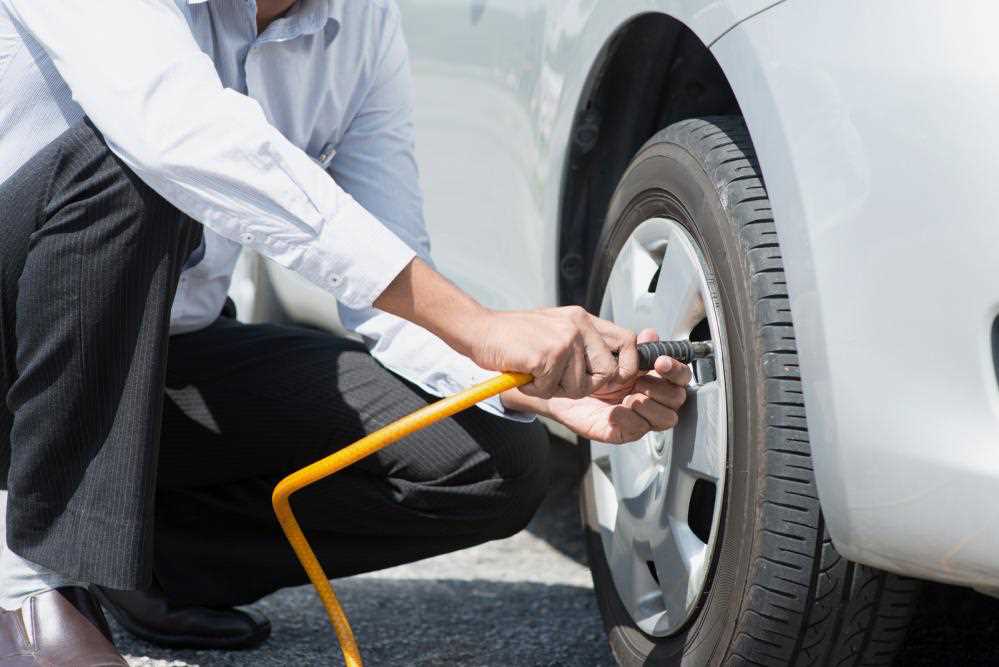
Before you begin filling up your tire with an air compressor, it is important to find out the recommended tire pressure for your specific vehicle. The recommended tire pressure can usually be found in your vehicle’s owner’s manual or on a sticker located on the driver’s side door jamb. It is important to note that the recommended tire pressure may vary depending on the make and model of your vehicle, as well as the type of tires you are using.
If you are unable to locate the recommended tire pressure in either of these places, you can also check with the tire manufacturer or consult a trusted mechanic. They should be able to provide you with the correct tire pressure for your vehicle.
It is important to fill your tires to the correct pressure in order to ensure optimal performance and safety. Overinflating or underinflating your tires can lead to poor handling, decreased fuel efficiency, and increased risk of a blowout. Therefore, it is crucial to always refer to the recommended tire pressure when filling up your tires with an air compressor.
Prepare the Air Compressor
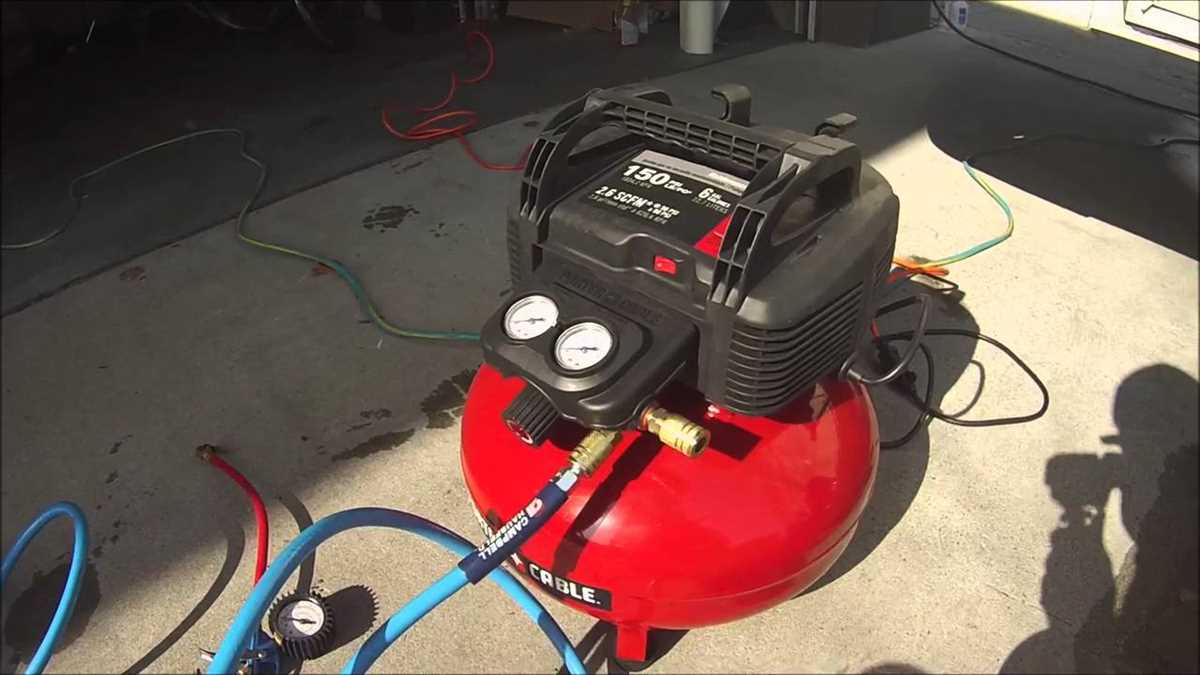
Before using the air compressor to fill up a tire, it is important to make sure that the compressor is in proper working condition and ready to use. Here are the steps to prepare the air compressor:
- Check the air compressor: Inspect the air compressor for any visible damage or leaks. Make sure all the valves, gauges, and hoses are in good condition.
- Connect the power source: Plug in the air compressor to a suitable power source. Ensure that the outlet has the correct voltage and amperage for the compressor.
- Add oil if necessary: Check the oil level in the compressor and add oil if needed. Follow the manufacturer’s instructions for the specific type and amount of oil required.
- Prepare the air hose: Attach the air hose to the compressor’s outlet port. Ensure that the hose is securely connected and free from any obstructions or kinks.
Besides the general preparation steps, it is important to read and understand the user manual of the specific air compressor model being used. This will provide detailed instructions on the proper operation and maintenance of the compressor.
Inspect the Tire for Damage
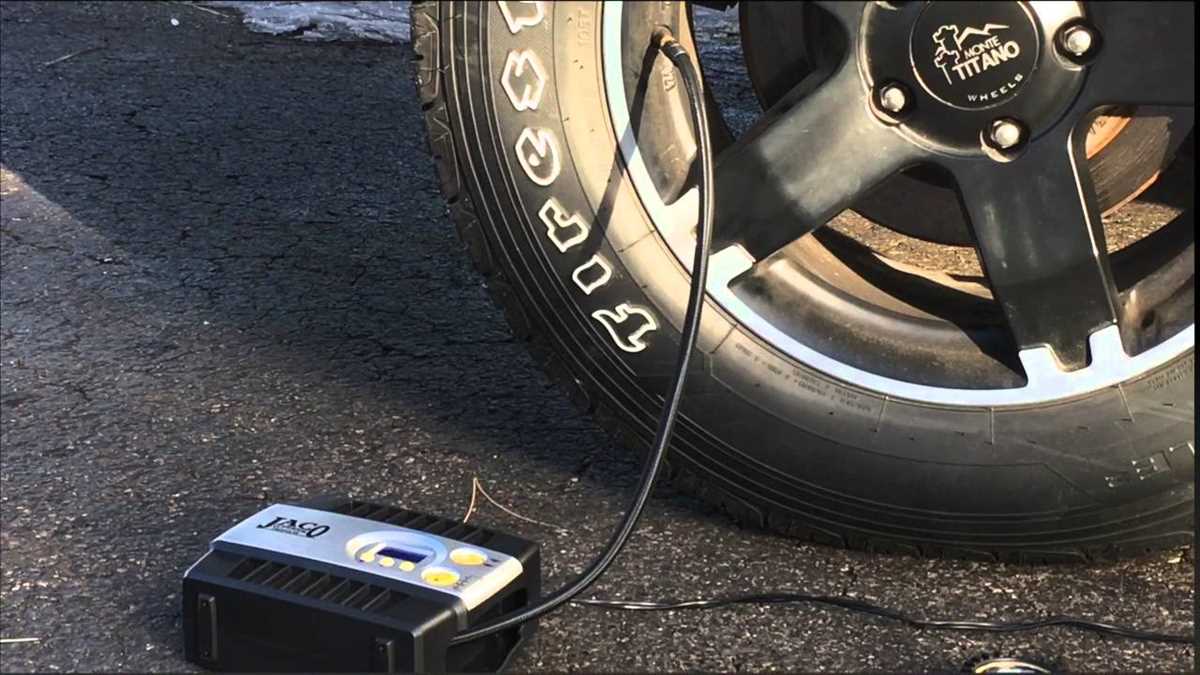
Before filling up a tire with an air compressor, it is crucial to inspect the tire for any signs of damage. This step is essential to ensure your safety and the proper functioning of the tire.
1. Check for visible punctures or cuts
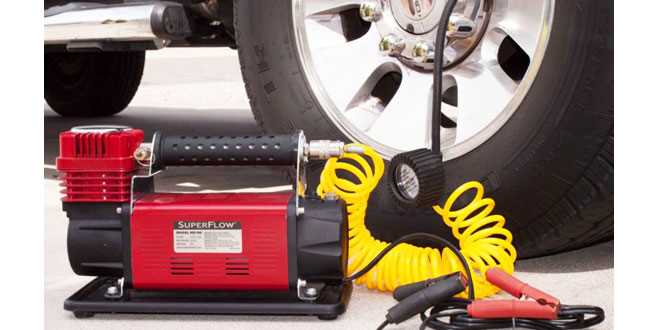
Thoroughly examine the tire’s surface for any visible punctures or cuts. These can be caused by nails, sharp objects, or even curb damage. If you notice any punctures or cuts, it is advisable to get the tire repaired or replaced by a professional before inflating it.
2. Look for bulges or blisters
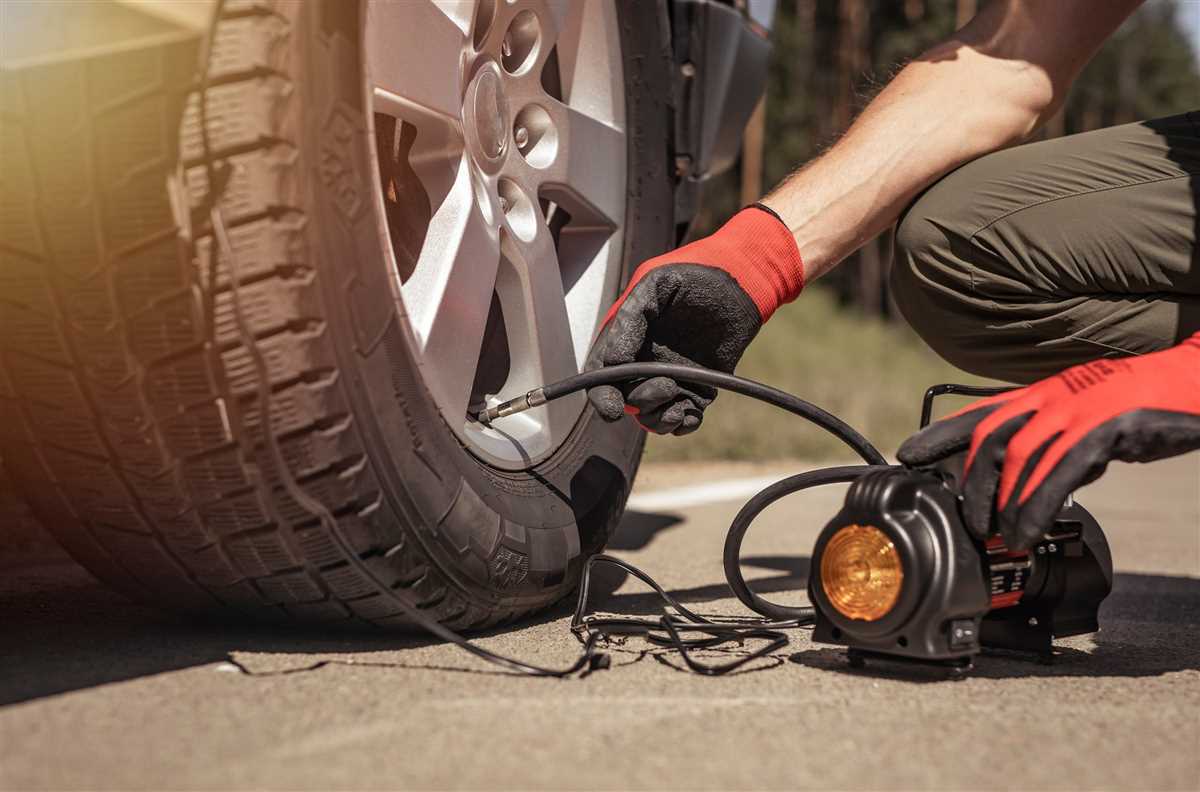
Inspect the sidewalls and tread area for any bulges or blisters. These irregularities can be a sign of internal damage or weak spots in the tire’s structure. Driving on a tire with bulges or blisters can be dangerous, as they can lead to a sudden blowout. If you notice any bulges or blisters, replace the tire immediately.
3. Check the tire tread depth
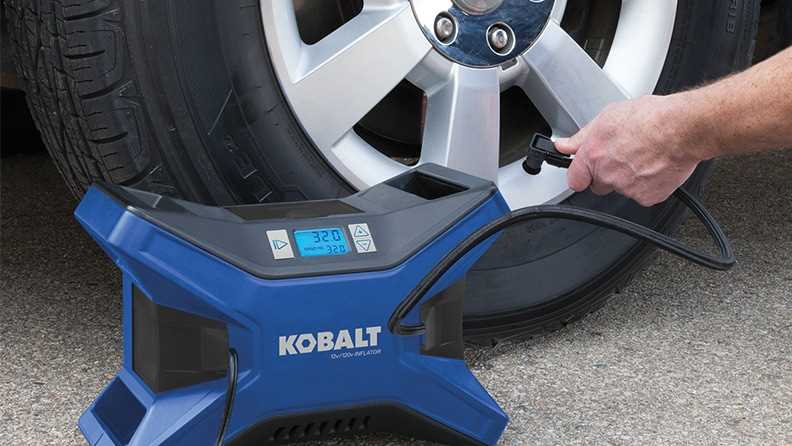
Measure the depth of the tire tread using a tread depth gauge or the built-in tread wear indicators. Insufficient tread depth can compromise the tire’s grip on the road, especially in wet or slippery conditions. If the tread depth is near the recommended minimum, consider replacing the tire to maintain optimal traction and safety.
4. Evaluate for any uneven wear patterns
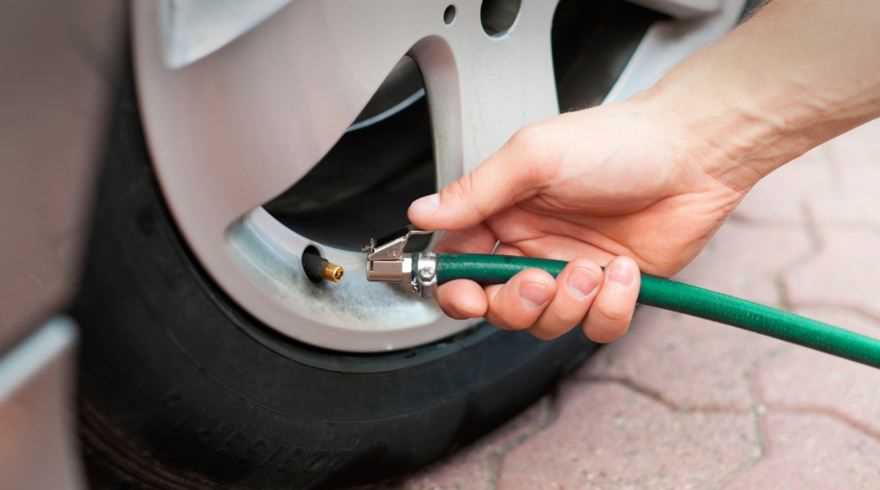
Inspect the tire for any irregular wear patterns, such as cupping, feathering, or scalloping. Uneven wear can indicate misalignment, improper inflation, or suspension issues. If you notice any uneven wear, it is recommended to have the tire and vehicle inspected by a professional to identify and address the underlying cause.
By thoroughly inspecting the tire for damage, you can identify any potential issues that may affect its performance and safety. Remember to address any damage or irregularities before filling up the tire with an air compressor.
Attach the Air Compressor to the Tire Valve
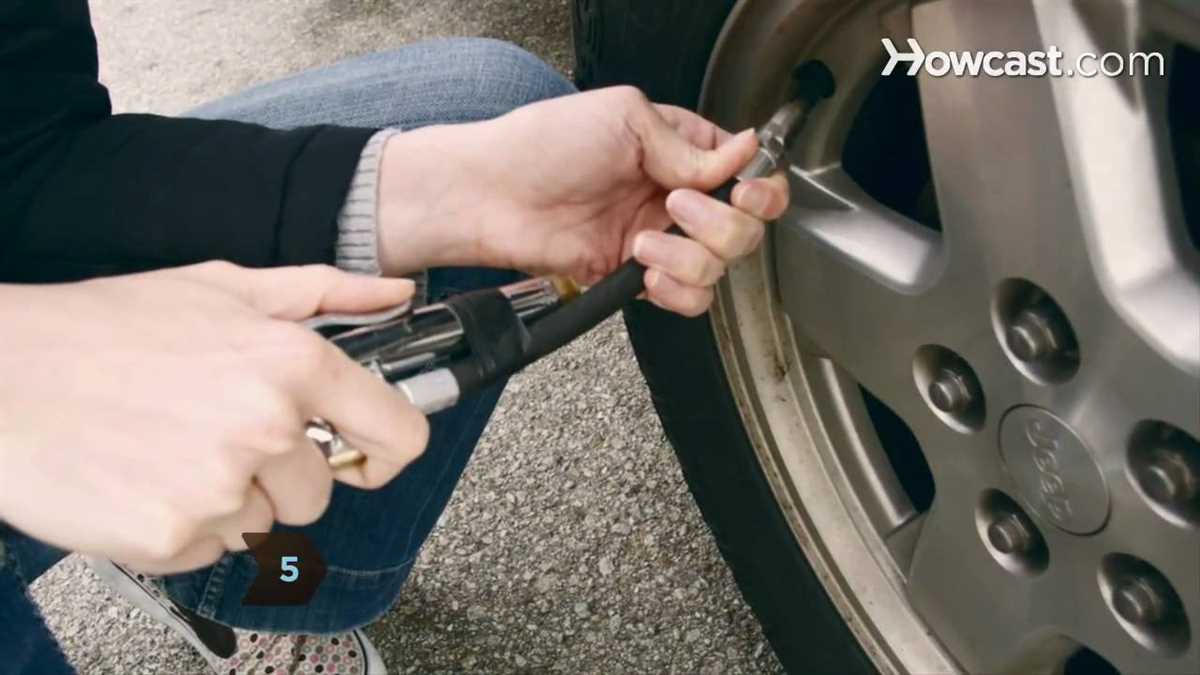
Before you begin filling up your tire with an air compressor, you need to attach the compressor to the tire valve. The tire valve is a small metal stem located on the side of the tire. It is typically covered with a rubber cap to protect it from dirt and debris.
To attach the air compressor to the tire valve, first remove the rubber cap from the valve stem. Then, locate the nozzle or chuck on the air compressor hose. The nozzle is usually threaded and can easily be screwed onto the valve stem. Make sure it is securely attached to avoid any air leaks.
Once the air compressor is properly connected to the tire valve, you are ready to begin filling up the tire. But before you do that, it’s important to check the tire pressure using a tire pressure gauge. This will help you determine how much air you need to add. Refer to your vehicle’s manual or the tire sidewall for the recommended tire pressure.
If the tire pressure is below the recommended level, turn on the air compressor and observe the pressure gauge on the compressor. Slowly fill up the tire with air by holding down the lever or trigger on the compressor until you reach the desired pressure. Be careful not to overinflate the tire, as this can be dangerous.
Inflate the Tire
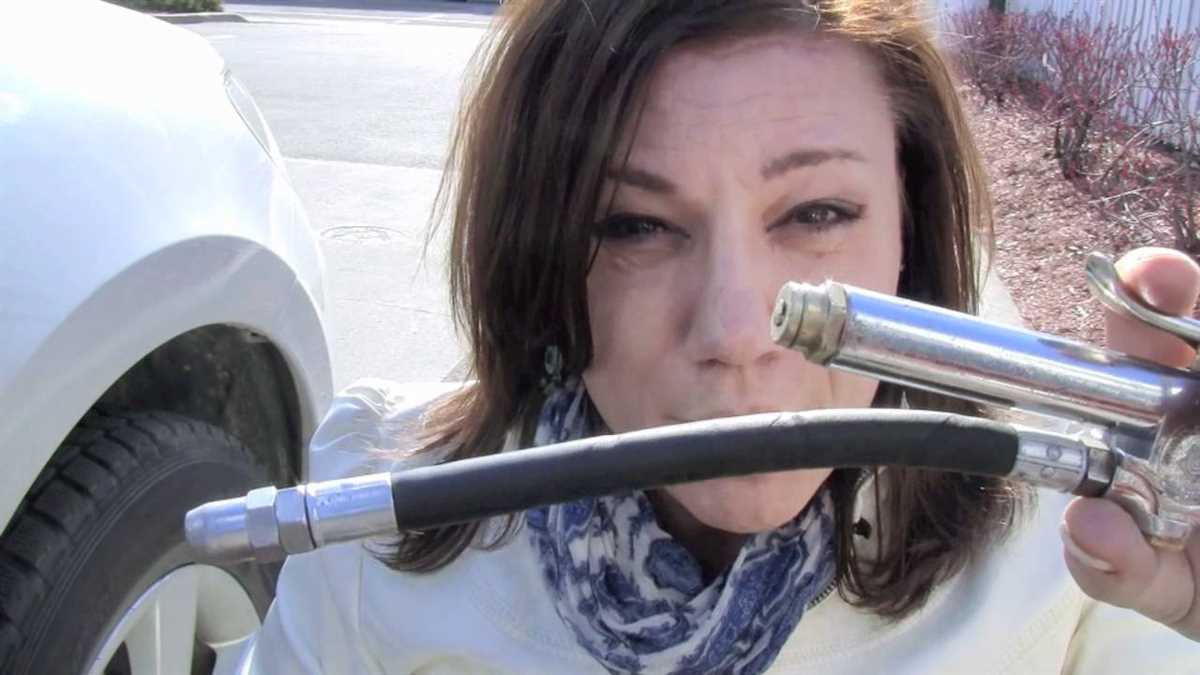
Once you have connected the air compressor to the tire valve, it is time to start inflating the tire. Make sure the air compressor is turned on and set to the appropriate pressure level for your tire. Refer to the manufacturer’s instructions or the tire sidewall for the recommended pressure.
Hold the air chuck firmly onto the valve and press the lever to release the air. You should hear a hissing sound as the air enters the tire. Keep an eye on the tire pressure gauge to monitor the air pressure. If the pressure is too low, continue adding air until it reaches the desired level.
As the tire inflates, it is important to regularly check the pressure gauge and release the lever on the air chuck to prevent overinflation. Overinflating the tire can lead to a blowout or uneven wear. Take breaks if necessary to allow the air compressor to cool down.
Once the tire reaches the desired pressure, remove the air chuck from the valve and quickly replace the valve cap to prevent air from escaping. Use the pressure gauge to double-check the tire pressure and adjust if necessary. Repeat the process for the remaining tires.
Check the Tire Pressure
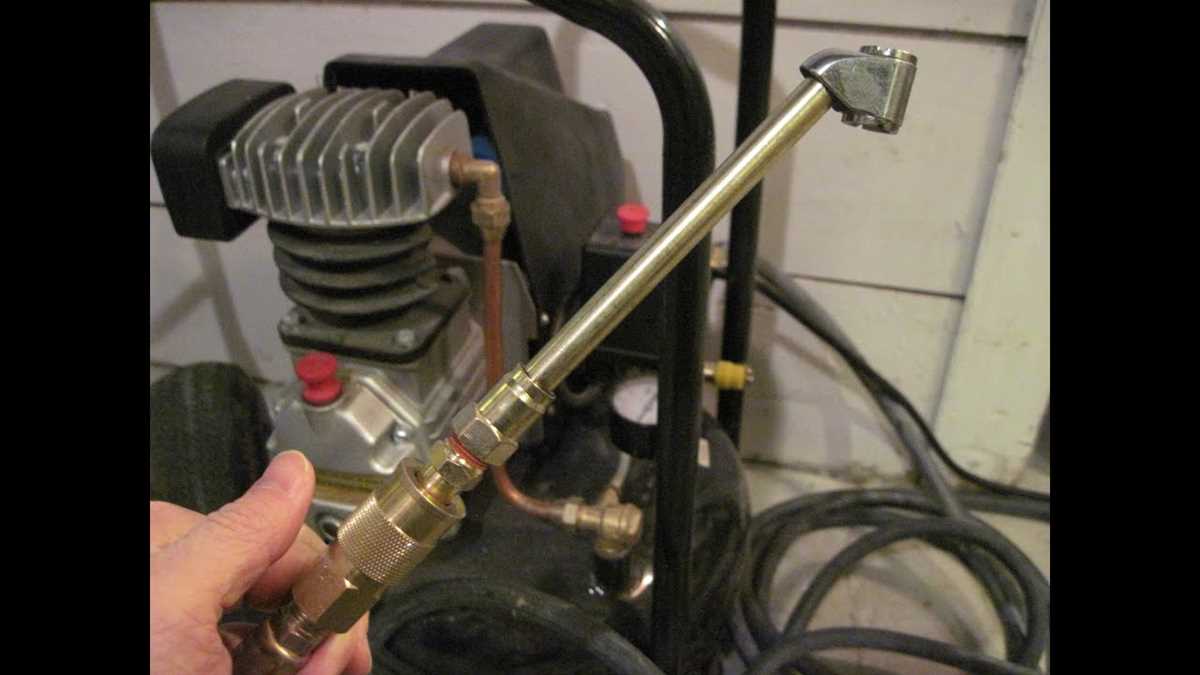
Before filling up a tire with an air compressor, it is crucial to check the tire pressure. Proper tire pressure is essential for safe driving and ensuring optimal tire performance.
To check the tire pressure, you will need a tire pressure gauge. This tool measures the air pressure inside the tire. Start by removing the valve cap from the tire valve stem. Press the tire pressure gauge onto the valve stem and hold it firmly in place.
Once the tire pressure gauge is securely attached, the reading will display on the gauge. Take note of the reading and compare it to the recommended tire pressure specified by the manufacturer. This information can usually be found in the owner’s manual or on a sticker located on the driver’s side door jamb.
It is important to check the tire pressure when the tires are cold, as the air inside the tires expands as they heat up from driving. If the tire pressure is too low, add air using an air compressor. If the tire pressure is too high, release some air by pressing the center pin inside the valve stem with the tire pressure gauge or a small tool.
Regularly checking the tire pressure is crucial for maintaining optimal tire performance, increasing fuel efficiency, and ensuring safe driving. It is recommended to check the tire pressure at least once a month and before long trips.
Reinstall the Valve Cap and Test the Tire
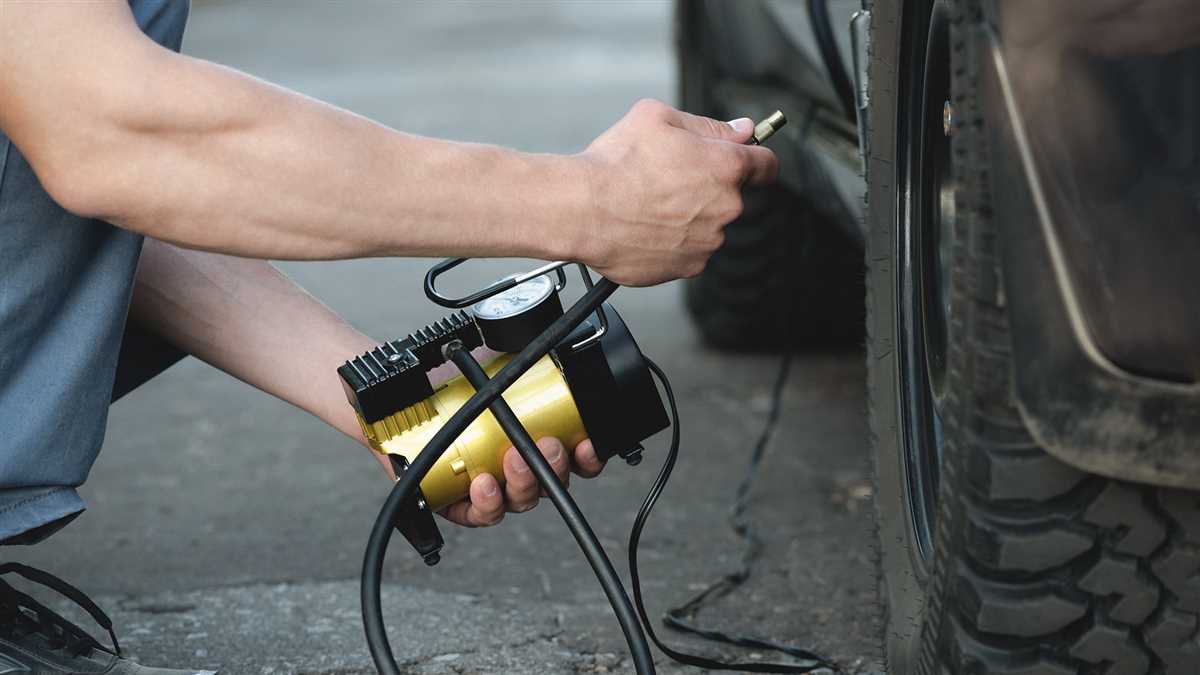
After you have finished filling up the tire with the air compressor, it is important to reinstall the valve cap. The valve cap acts as a protective cover for the valve stem, preventing any dirt or debris from entering the tire.
Make sure to thread the valve cap back onto the valve stem in a clockwise direction. This will help to ensure a secure fit and prevent any air from leaking out of the tire.
Once the valve cap is securely in place, it is time to test the tire to make sure it is properly inflated. Use a tire pressure gauge to check the air pressure. The recommended air pressure can usually be found on the side of the tire or in the vehicle owner’s manual.
- Remove the valve cap.
- Place the tire pressure gauge onto the valve stem.
- Press down firmly to get an accurate reading.
- Check the gauge to see if the air pressure matches the recommended level.
If the tire pressure is too low, you can use the air compressor to add more air. Simply repeat the previous steps to fill up the tire until the desired pressure is achieved.
Once the tire is properly inflated, make sure to securely reinstall the valve cap to protect the valve stem and prevent air from escaping. Regularly checking and maintaining the air pressure in your tires is important for both safety and fuel efficiency.
FAQ:
What is an air compressor?
An air compressor is a device that converts power from an electric motor, diesel or gasoline engine into kinetic energy by compressing and pressurizing air.
Can I fill up my car tire with an air compressor?
Yes, you can fill up your car tire with an air compressor. It is a convenient and efficient tool for this task.
Why should I fill up my tire with an air compressor?
You should fill up your tire with an air compressor to maintain the proper tire pressure, which is essential for safe and efficient driving. Correct tire pressure also helps to prolong the life of your tires.
What are the steps to fill up a tire with an air compressor?
The steps to fill up a tire with an air compressor are as follows: 1. Find the correct tire pressure for your vehicle. 2. Attach the air hose to the tire valve. 3. Turn on the air compressor. 4. Fill the tire with air, keeping an eye on the pressure gauge. 5. Stop filling when you reach the desired pressure. 6. Remove the air hose and replace the valve cap.
Are there any safety precautions I should take when using an air compressor?
Yes, there are a few safety precautions to keep in mind when using an air compressor: 1. Wear safety goggles to protect your eyes from any debris. 2. Make sure to secure the air hose properly to prevent it from whipping around. 3. Do not overinflate the tire, as it can lead to a blowout. 4. Regularly inspect the air compressor for any damage or leaks before use.
What are the advantages of using an air compressor to fill up a tire?
Using an air compressor to fill up a tire has several advantages: 1. It is faster than using a hand pump. 2. It allows for precise pressure control. 3. It is more convenient, especially if you have multiple tires to fill. 4. It can be used for other tasks, such as inflating sports equipment or air mattresses.
Video:













